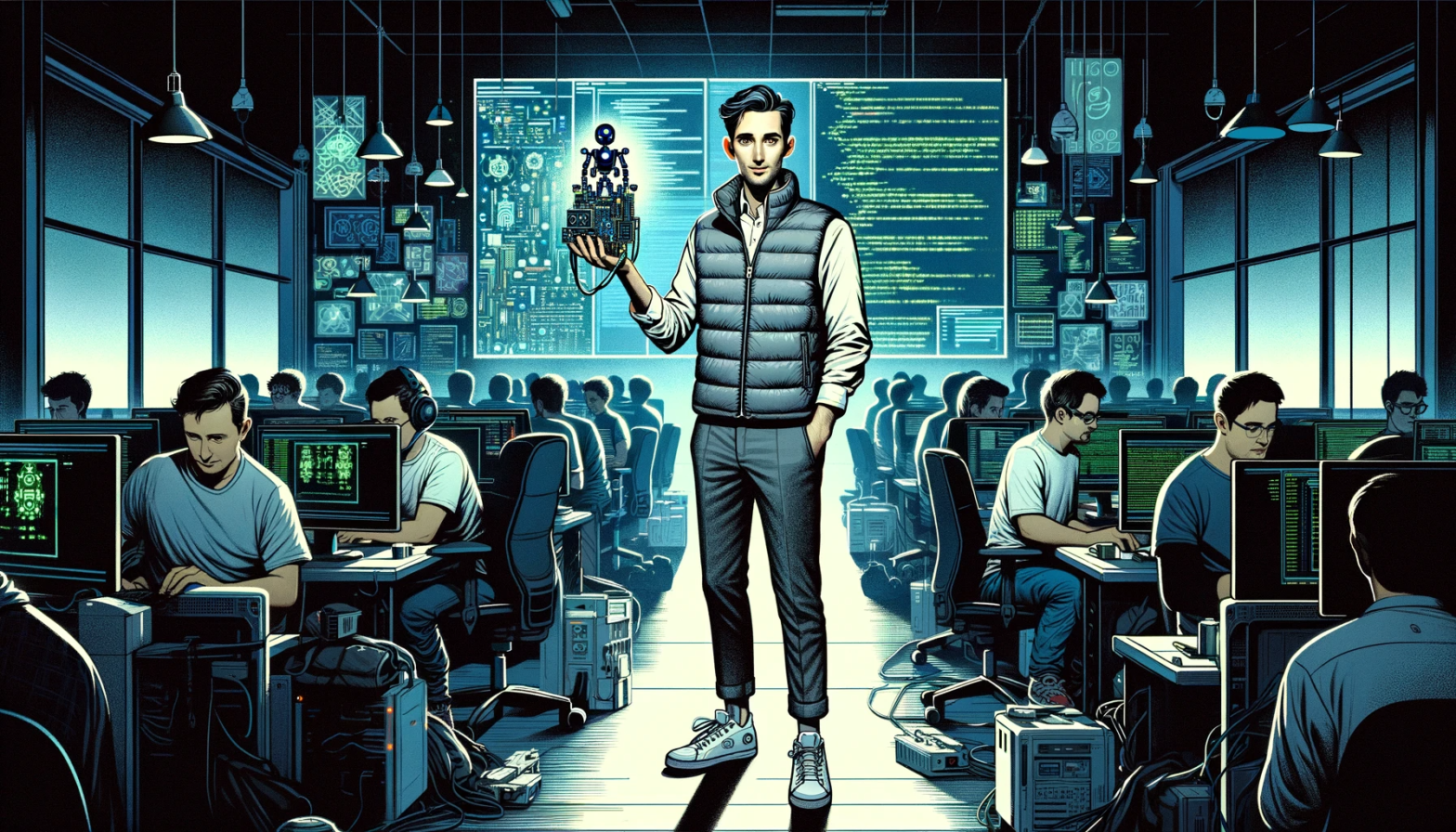This post was inspired by two things I saw recently:
- Jonny Price of WeFunder, sharing their newly designed raise page, featuring some giants of tech like Substack, Mercury and Levels.
- Xalavier Nelson Jr. of Strange Scaffold, commenting on the seemingly extreme success of Larian Studios, with the upcoming release of Baldur’s Gate, and imporing consumers that it not “raise the standard”.
The connection between these two items is not obvious, but it is interesting.
The lemon problem
WeFunder, for the uninitiated, is a crowdfunding platform for (primarily) technology companies. It allows community-oriented startups to sell a small % of ownership to their users and supporters.
Unfortunately, crowdfunding faces a stigma which some refer to as ‘the lemon problem’. Essentially, “why are you raising from unsophisticated retail investors when you could get backing from a top tier venture capital firm?”
This signalling issue then discourages the best startups from pursuing crowdfunding, which (in theory) lowers the overall quality available there, reenforcing that crowdfunding is a negative signal.
The problem with that concept is that it is dumb, and built on a decade of putting venture capital on a pedestal.1
Crowdfunding, or ‘community rounds’ as Jonny would prefer, offers a path for users and supporters to become advocates with ownership and incentives aligned with your own. You can offer them perks, you can treat them as your Customer Advisory Board, and you can usually rely on them to help disseminate your message.
Unfair advantages
So where does this connect with Xalavier, and Larian?
We’ll begin at the end, with Xalavier’s comment:
Like a lot of people, I’m deeply excited about what the lovely folks at Larian accomplished with Baldur’s Gate 3, but I want to gently, pre-emptively push back against players taking that excitement and using it to apply criticism or a “raised standard” to RPGs going forward.
Xalavier Nelson Jr. on the expectations set by Baldur’s Gate 3
He goes on to cite a number of reasons why Larian has been advantaged in the development of Baldur’s Gate. Particularly, their experience with this style of game, and the importance of the IP they have secured from Wizards of the Coast.
He’s right on all counts. Larian is – today – in an unparalleled position as a developer of RPG games. They have great experience, multiple studios, a supportive community, and a huge IP.
You could, if you were a peer of Larian’s, a fellow game developer, feel a bit like they are operating in a league above you. That there’s an unfair advantage, and any comparison between their work and yours would be unfair. Punching down.
Unfortunately, Xalavier stopped there. He didn’t finish the thought. He never asked why Larian has this advantage, to determine whether or not it is unfair.
Kickstarting a dream
Back in 2013, Larian was a relatively small games studio. They did ‘mercenary’ work for other studios to help pay their bills while developing their own string of medium-budget RPG titles.
Their work was quality, but they couldn’t compete in the big leagues. Studios like Bethesda, Obsidian and Bioware were effectively household names, and threw resources into pushing the envelope of what RPGs were offering.2
Larian were ambitious, though. Swen Vincke, the studio head, had been an RPG fanatic all the way back to Ultima 7, and he wasn’t done trying to carve a path in the genre. As they began developing their next title, Divinity: Original Sin, they ran into a problem: it was more game than they could afford to make, but they couldn’t afford to make any less. They needed a break.
Funding for games is notoriously difficult. All of the costs come before you make a penny in revenue, and there are usually few indications that you’ve made something players want until release. Many games flop, and many studios fold. It’s not an attractive area for institutional investors. So Larian turned elsewhere, to their community, and the wider community of RPG fans.
In 2013 they launched a Kickstarter campaign for Divinity: Original Sin. They aimed to raise between $400,000 and $1,000,000 to support development, by offering everything from ‘gratitude’ to an invitation to the launch party depending on how much was contributed. They clearly laid out what each benchmark in funding would mean for the game, and the player’s experience.
They didn’t quite hit the $1,000,000 mark, but they did raise $944,282 from close to 20,000 individuals. An average contribution of almost $50 each, from a vast but not cash-rich audience, into the dream of a great RPG.
It gave Larian the cash they needed to get Divinity: Original Sin out of the door, and it was everything they had hoped for: a landmark RPG which put the studio on the map, and laid the groundwork for everything they would do in future. Ultimately, their work inspired sufficient confidence from Wizards of the Coast to give Larian the rights to develop the Baldur’s Gate franchise with this hotly anticipated sequel.
Community driven growth
Over the next few years, covering the eventual launch of Divinity: Original Sin in 2015, the even-more-succesful sequel in 2017, and up until the imminent release of Baldur’s Gate 3 today, Larian has experienced the benfit of that crowdfunding round.
More than any other factor, raising money from an audience of customers (and potential future customers) has meant that Larian has never had to compromise. They were not at the mercy of institutional investors or publishers to hit hasty development milestones or add supplementary revenue streams. They could build the game as they wished, by a group of RPG enthusiasts; for an audience of RPG enthusiasts. They are self-sufficient, and happily so.
We’d tried multiple times with third parties and we listened to them every single time, and we had to learn that it was important that we took our own fate in our own hands. And since then, things have been going on the upside for us.
Swen Vincke on developing Divinity: Original Sin
This alignment of incentives between product and customer is fundamental. It’s how companies should work at the best of times, but the need for external capital can often complicate the relationship. Larian went right to the source.
And that is their ‘unfair advantage’, that they were able to focus entirely on their vision to build a fantastic product.3 Exactly as every company should, in theory.
Equity in the equation
Larian’s crowdfunding success was built purely on the promise of what their product could offer to customers, and how additional capital would strengthen that proposition.
In the world of startup financing, equity crowdfunding takes this concept and injects it with steroids. Revolut’s crowdfunding round in 2016 has since created more than 100 millionaires, and the company has attracted more than 4,000 retail investors to date.
These may not necessarily all be users of Revolut, but they are individuals who believe in the future of the company, will recommend it to others, and will contribute to the future growth of the company.
This is why I’ve long been enthusiastic about crowdfunding as a source of capital for startups. And while that includes the obvious consumer companies with network effects and tangible investor perks, it also includes many successful raises from business-facing deeptech companies who are producing radical innovation.4
Be like Larian. Make community your unfair advantage.
- How is that going, by the way? [↩]
- And each had, in their own way, at a previous point in time, earned that place in the ‘big leages’. [↩]
- It has also allowed them, more recently, to build this supportive community into their development pipeline. Early access for Baldur’s Gate 3 will have lasted for an unprecedented three years before official release, during which time they have relied on that community for feedback and vital testing capacity. [↩]
- Why VCs are failing that sector is another subject, but if you’ve read many of my recent articles you may be able to piece that together yourself. [↩]

